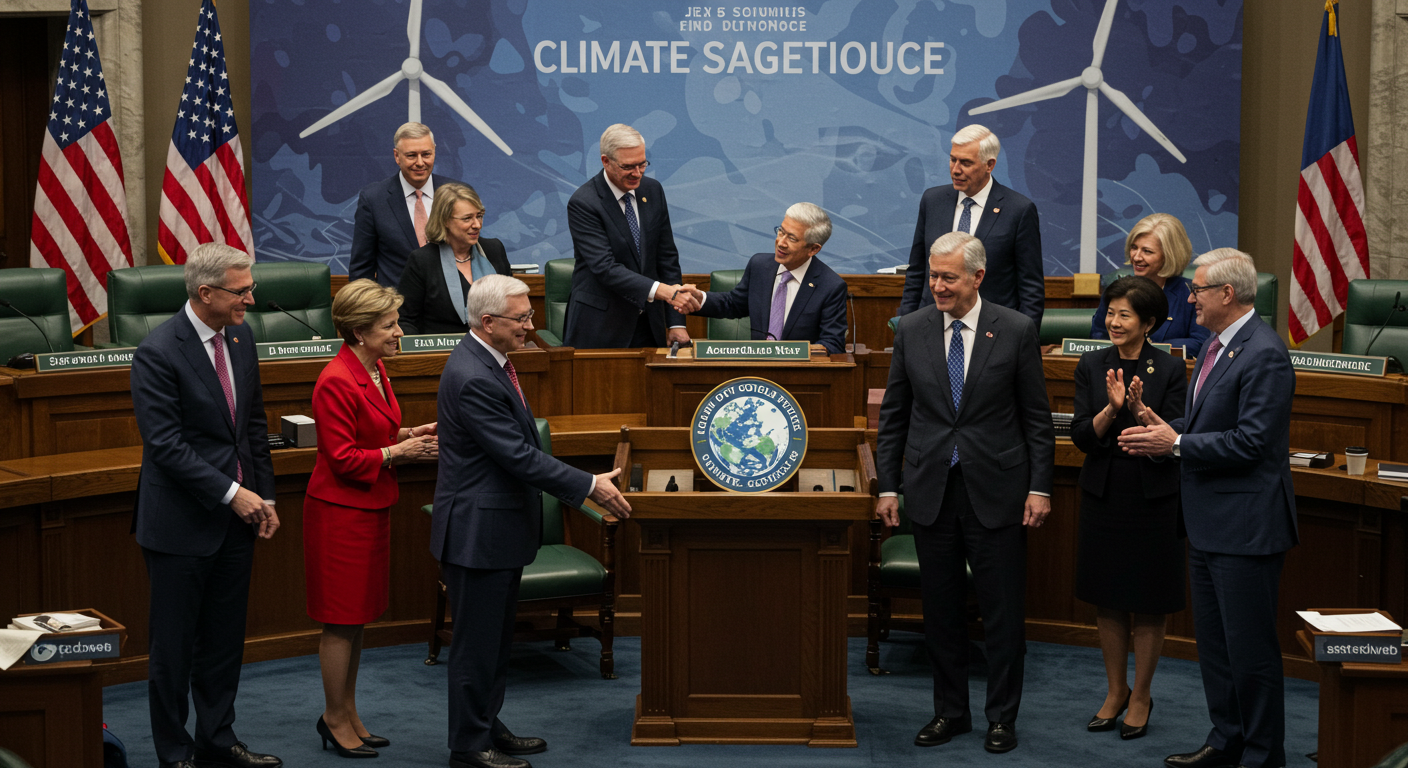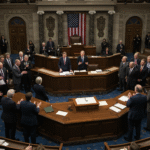Bipartisan Effort Leads to Historic Climate Legislation
In August 2022, the United States Congress passed what has been hailed as landmark climate legislation—the Inflation Reduction Act (IRA). This significant piece of legislation showcases the power of bipartisan collaboration, bringing together diverse political perspectives to combat one of the most pressing challenges of our time: climate change.
Historical Context of Climate Legislation in the U.S.
For decades, climate policy in the U.S. has often been a contentious subject, with divisions largely based along party lines. Previous attempts at sweeping climate reform have encountered resistance, resulting in stalled initiatives and disappointment among advocates. However, the tide began to turn due to growing public awareness and urgency surrounding climate-related disasters—from wildfires in the West to hurricanes in the Southeast.
The framing of climate change as not just an environmental concern but also as a matter of public health, economic stability, and national security has led to increased bipartisan interest. Lawmakers began to recognize that climate action could spur investment in clean technologies, job creation, and public welfare—all essential aspects of both Republican and Democratic priorities.
Key Provisions of the Inflation Reduction Act
The Inflation Reduction Act represents one of the most extensive climate measures ever enacted in the U.S., featuring several critical initiatives aimed at reducing greenhouse gas emissions by 40% below 2005 levels by 2030.
-
Investment in Renewable Energy: The IRA allocates approximately $369 billion for energy security and climate change efforts. This funding supports various renewable energy projects, including solar, wind, and geothermal energy development. Tax incentives such as the Production Tax Credit and the Investment Tax Credit incentivize businesses and homeowners to adopt clean energy technologies.
-
Electric Vehicle Incentives: The legislation also provides tax credits of up to $7,500 for new electric vehicle purchases, as well as additional credits for used EVs. This program aims to promote cleaner transportation options, decrease reliance on fossil fuels, and bolster domestic EV manufacturing.
-
Support for Green Jobs: The IRA emphasizes job creation within the burgeoning clean energy sector. It invests significantly in workforce development programs designed to equip workers with skills needed for jobs in renewable energy fields, ensuring that displaced fossil fuel workers have pathways to new opportunities.
-
Methane Emission Reduction: The legislation imposes fees on excess methane emissions from oil and gas facilities, a crucial measure considering methane’s potency as a greenhouse gas, being over 80 times more effective at trapping heat in the atmosphere than carbon dioxide in the first 20 years post-emission.
- Community Investments: Acknowledging the disproportionate impacts of climate change on low-income and marginalized communities, the IRA allocates funds to support environmental justice initiatives, aiming to ensure that vulnerable communities have not only access to resources but also a voice in climate planning.
The Role of Bipartisanship
One of the defining features of the IRA is its bipartisan origins. Sen. Joe Manchin (D-W.Va.) played a crucial role in negotiating aspects of the bill, particularly around energy provisions that appeal to both party bases. His insistence on fossil fuel provisions bridged a gap between progressive climate advocates and moderates wary of rapid transitions away from traditional energy sources.
Republican support came from recognizing the bill’s dual capacity to spur economic growth while addressing climate issues. Key votes from moderate Republicans reflected a realization that investment in clean energy also translates to increased job opportunities at home, particularly in states with existing fossil fuel jobs.
The successful passage of the IRA demonstrated that climate policy, when framed around job creation and national economic growth, could become an enticing agenda for legislators across the aisle.
Challenging Political Climate
Despite the milestones achieved, the political landscape for climate legislation remains remarkably fractured. Opposition from certain factions within the Republican party and oil lobbies attempts to undermine the IRA through misinformation and legal challenges, focusing on fears of regulatory overreach and economic disruption.
Moreover, the bill still faces scrutiny regarding its long-term efficacy, especially as climate science evolves. To maintain momentum, ongoing bipartisan communication and collaboration will be essential in adapting strategies to ensure a sustainable future.
State-Level Responses and Implementation
Implementation of the IRA unfolds with various state-level responses that leverage federal incentives to boost their clean energy initiatives. States like California and New York have already adjusted their policies to align with the IRA’s goals, offering state-level tax rebates and incentives to facilitate a smooth transition to cleaner energy sources.
Furthermore, partnerships between state governments and private sector actors, such as utility companies and tech startups, have encouraged localized investments that are crucial for successfully deploying renewable energy infrastructure.
Public and private entities recognize the potential for profitable investments in clean technologies, spurring innovation that draws not only from compliance mandates but from the knowledge that the renewable energy sector is increasingly competitive.
Public Engagement and Future Outlook
The enactment of the IRA has sparked renewed public interest in environmental advocacy. Grassroots organizations, local communities, and businesses are mobilizing to engage citizens, promoting awareness of available incentives while educating them about the importance of sustainable choices. This grassroots movement plays a vital role in sustaining the momentum generated by the legislation.
Future legislative efforts that build upon the IRA’s framework could further the U.S.’s commitment to combating climate change. It is imperative for policymakers to maintain bipartisan dialogue, recognizing that climate change is a nonpartisan issue.
Investments made today will shape the environmental landscape for generations. Continued bipartisan efforts can ensure that the U.S. remains a leader in global climate initiatives, promoting innovation and action necessary to address this critical challenge for humanity.
The successful passage and implementation of the Inflation Reduction Act prove that when diverse political factions unite around common goals, substantial progress can be made, setting a precedent for future environmental and economic collaborations.




